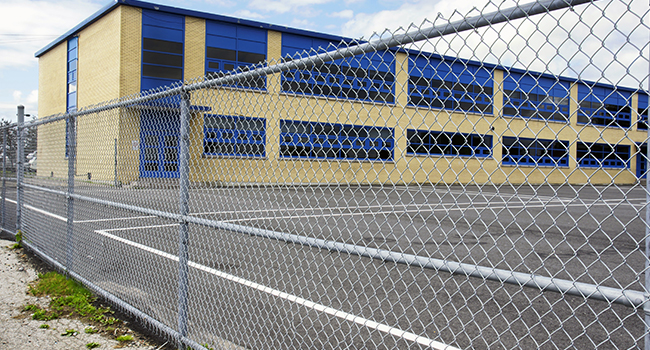
NC School for the Deaf to Implement Nearly $1M in Security Upgrades
The first project will be a security perimeter fence, which will include a gatehouse with controlled access. Other projects include internal security measures and mechanisms based around visually-oriented mass communication.
- By Jessica Davis
- March 05, 2019
The Eastern North Carolina School for the Deaf plans to implement almost $1 million worth of upgrades to safety and security this year.
The combined cost of the improvements will be $997,000, with $365,000 going to security gate and perimeter fencing and $632,000 for security doors, television, fiber optics and other security equipment, according to School for the Deaf director Michele Handley.
The first project will be a security perimeter fence, which will include a gatehouse with controlled access. Other projects include internal security measures and mechanisms based around visually-oriented mass communication.
“So there will be TVs placed within all of the common areas,” Handley said. “The TVs in all of the classrooms are being updated so that they can all be compatible to a mass communication system on campus; should we have an emergency, we can get that message out quickly. It will also include a new badge system that will allow us to have that badge system access to the buildings.”
According to Handley, both projects will be helpful for the school’s students. She said they have to monitor student movement across campus, and the perimeter security will give students more freedom.
“We are located right next to this highway, and that puts us at risk for transient or drop-in kinds of incidents, so having this perimeter security is going to allow our students to enjoy more freedom on campus, especially in terms of our high school students. They can check out of the dorm and go to the basketball game over in the gym and kind of get some independence, learn how to function within a set of rules and expectations.”
Handley also said that the upgrades to security will lessen risk and provide more control for the residential students and teachers.
“We have students who are here 24-5, and so that is going to allow for a greater level of safety for our staff as they move about the campus during those overnight hours moving from building to building and checking on everything,” Handley said.
Some of the security and safety upgrades will include an alarm system designed for those who are deaf and/or hard of hearing. Handley said that the alarm system work much like messages scrolling across a TV in an airport. The school will also have a program where that system can be used for non-emergency situations, like calling a student to the office.
“So that’s how it’s going to work,” Handley said. “This is going to join the whole campus, so every single building will have TVs in the common areas. All classrooms, the TV rooms and common areas in the dorms, the lobbies, all of those buildings are going to be connected onto this one system, so that if we needed to send out a lockdown notice or a shelter-in-place notice or a tornado warning, we can put those out on those TVs and that is going to be accessible to everyone on campus.”
The security upgrades are expected to begin later this year.
About the Author
Jessica Davis is the Associate Content Editor for 1105 Media.